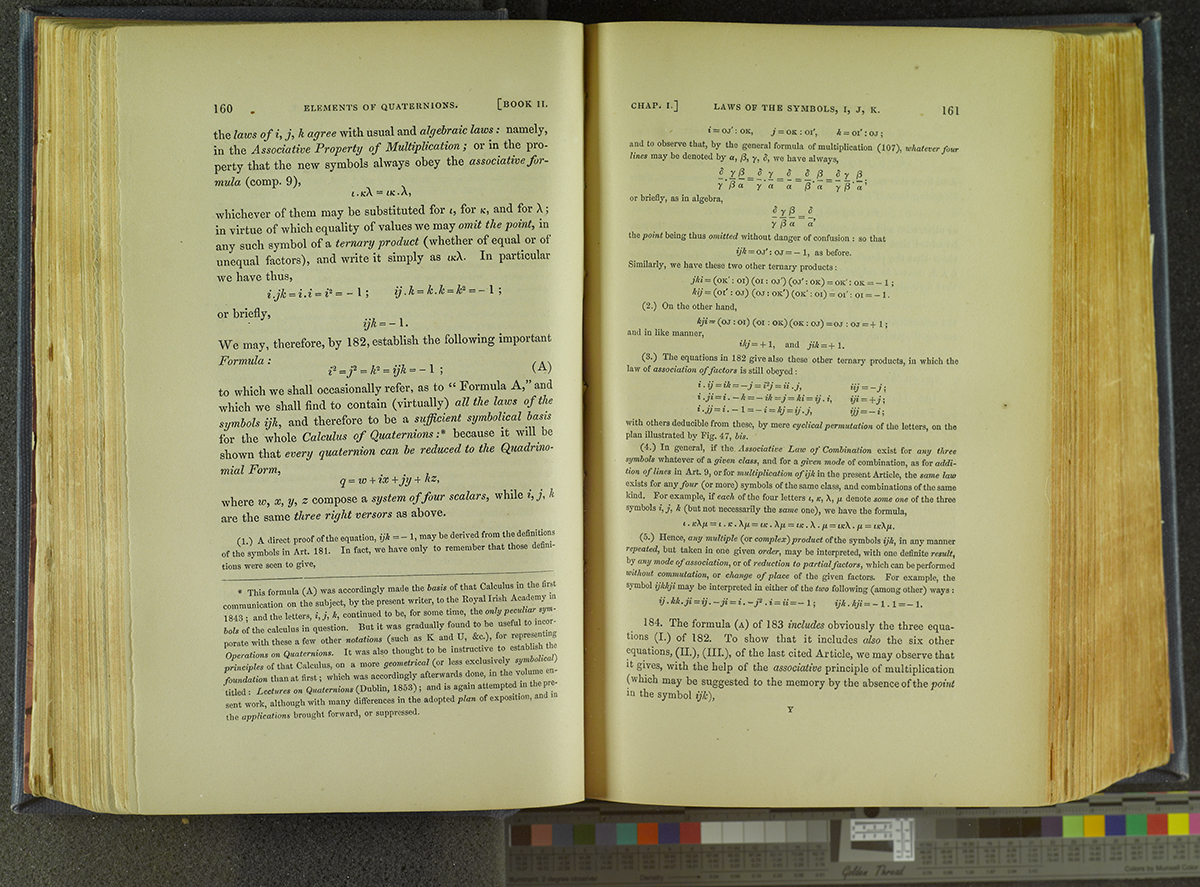- About MAA
- Membership
- MAA Publications
- Periodicals
- Blogs
- MAA Book Series
- MAA Press (an imprint of the AMS)
- MAA Notes
- MAA Reviews
- Mathematical Communication
- Information for Libraries
- Author Resources
- Advertise with MAA
- Meetings
- Competitions
- Programs
- Communities
- MAA Sections
- SIGMAA
- MAA Connect
- Students
- MAA Awards
- Awards Booklets
- Writing Awards
- Teaching Awards
- Service Awards
- Research Awards
- Lecture Awards
- Putnam Competition Individual and Team Winners
- D. E. Shaw Group AMC 8 Awards & Certificates
- Maryam Mirzakhani AMC 10 A Awards & Certificates
- Two Sigma AMC 10 B Awards & Certificates
- Jane Street AMC 12 A Awards & Certificates
- Akamai AMC 12 B Awards & Certificates
- High School Teachers
- News
You are here
Mathematical Treasure: William Rowan Hamilton's Quaternions

William Rowan Hamilton's (1805-1865) most important contribution to mathematics was his development of quaternions, which freed mathematicians from the confines of three-dimensional space. He first conceived of the idea in 1843 and, while he published notes on the subject for the use of his students, he did not consolidate his theories into a book until the end of his life. He died before the task was completed, and his son William finished the task and published Elements of Quaternions in 1866. When first published, the book was over 700 pages. In later editions, it was issued in two volumes.

On page 158 (above, left), the cyclic nature of multiplying the unit vectors \(i, j,\) and \(k\) is explained. On the following page (above, right) one encounters the fact that this operation of multiplication is not commutative.

On pages 160 and 161 (above) the reader is introduced to the Quadrinomial Form: \(q = w + ix + jy + kz.\)
The Special Collections staff at the Linderman Library of Lehigh University in Bethlehem, Pennsylvania, is pleased to cooperate with the Mathematical Association of America to exhibit this and other items from the Library’s holdings in Mathematical Treasures. In particular, Convergence would like to thank Lois Fischer Black, Curator, Special Collections, and Ilhan Citak, Archives and Special Collections Librarian, for their kind assistance in helping to make this display possible. You may use these images in your classroom; all other uses require permission from the Special Collections staff, Linderman Library, Lehigh University.
Frank J. Swetz (The Pennsylvania State University), "Mathematical Treasure: William Rowan Hamilton's Quaternions," Convergence (June 2014)




